Constant Radius
The Constant Radius event simulates a vehicle driving in a circular path. The Constant Radius event maintains a constant turn radius and varies the vehicle velocity to produce increasing amounts of lateral acceleration. Steering and torque controllers maintain the path and the speed of the vehicle through the event. A plot template is available to plot the results. The Constant Radius event is used to characterize the roll and understeer characteristics of a vehicle.
- Understeer
- Two desired vehicle behaviors underlie the concept of understeer: as the vehicle speed on a constant radius path increases the driver must increase the steer angle to follow the path, and when the speed increases to the point where the vehicle reaches its limit of lateral acceleration the vehicle drifts outward to a larger radius (yaw rate stops increasing) rather than spinning (increasing yaw rate). The latter behavior requires that the front tires lose adhesion before the rear tires. In front wheel drive vehicles one can induce excessive understeer by applying throttle so the front tires lose adhesion.
- Neutral-Steer
- For a neutral steer vehicle the steer angle required to follow a constant radius is constant independent of speed. However, the vehicle side-slip angle must increase with increasing speed to develop the necessary lateral force, requiring the driver’s careful manipulation of the steering and/or throttle to balance the vehicle and avoid a spin.
- Oversteer
- For an over-steer vehicle the steer angle required to follow a constant radius
decreases with speed making the vehicle very difficult for a driver to control.
Alternatively, a step steer input to an oversteering vehicle will cause the vehicle
lateral acceleration and yaw rate to increase to the point where the vehicle spins. In
contrast, a step-steer input to an understeering vehicle generates a limited lateral
acceleration and yaw rate.
Vehicles with poorly designed suspensions and/or poorly chosen tires may show understeer but transition to oversteer for some combinations of speed, lateral acceleration and vehicle loading.
- Computing Understeer
- Understeer is the difference between the average front and rear tire slip angles.
For a neutral steer vehicle the slip angles will be the same, for an understeering
vehicle the front slip angles are of greater magnitude than the rear slip angles,
while for an oversteering vehicle the rear slip angles are of greater magnitude than
the front slip angles.

Here:
 = Slip-angle: The angle in radians measured from the
velocity vector to the tire heading looking downward from above the tire.
= Slip-angle: The angle in radians measured from the
velocity vector to the tire heading looking downward from above the tire. Figure 1. 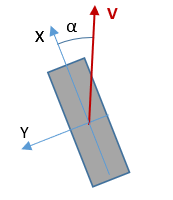
The event can be run in lateral acceleration control mode or in velocity control mode. In lateral acceleration control mode, the vehicle is driven at a constant speed around the circular track, which results in a constant lateral acceleration.
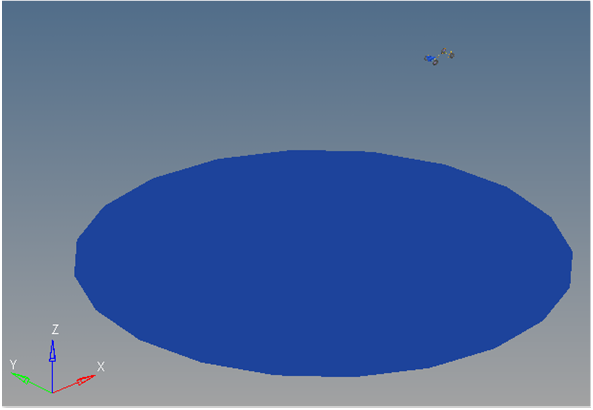
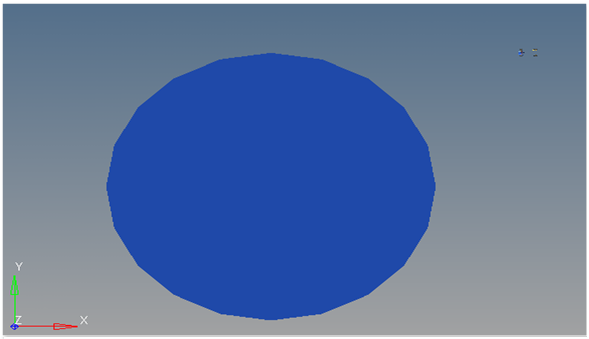
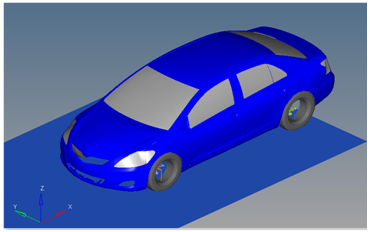
The event is designed to drive a vehicle on a constant radius at either a constant lateral acceleration or at a steadily increasing speed. The event begins with a straight section of road that allows the vehicle to come to steady state. The vehicle enters the turn and the controllers maintain the desired velocity or lateral acceleration.
Lateral Acceleration Control
If lateral acceleration is selected for the vehicle control, the event is run at a steady state lateral acceleration. A target lateral acceleration and the radius of the track are entered in the form. The vehicle initial speed is calculated using the equation v=sqrt(r*a). The equation is embedded in the form.
- Event Step
- Description
- Start
- Vehicle begins driving in a straight line towards the constant radius circle tangent at the speed that will generate a Lateral Acceleration that was entered in the form.
- Turn into Constant Radius Track
- Vehicle enters the constant radius track. Turn direction is determined from the form entry (left or right). Steering is controlled by the steer controller. Speed is maintained by the drive torque controller. Lateral acceleration should be constant (because speed is constant).
- Follow the Constant Radius
- The vehicle follows the constant radius path for the time defined in the event.
- End of Event
- The event ends when the time in circular track time is met.
A series of lateral acceleration control events is typically run to characterize the vehicle. A series would include left and right turns (to understand the symmetry of the vehicle) and a sweep of lateral accelerations to characterize the behavior of the vehicle as acceleration increases. The track radius should match the radius of the test track being used to generate correlation data.
Velocity Control
- Event Step
- Description
- Start
- The vehicle drives toward the tangent of the Constant radius path. The initial speed is determined from the Circle Radius and the desired initial Lateral Acceleration. Low accelerations result in lower initial speeds.
- Turn into Constant Radius Path
- The vehicle turns into the Constant radius path and begins to accelerate.
- Follow Constant Radius Path
- The vehicle drives along the Constant radius path and increases speed. The vehicle speed is increased from the initial speed to the final speed in the Time in circular track time. Use a longer time to minimize acceleration effects on the results.
- Event End
- The event ends after the Time in circular track time is complete.
If the model cannot maintain the circular path, the error Could not Find Ideal SWA in 20 Iterations is sent to the log file. This is a generic error that indicates the path is not being followed. It can be caused by a wide variety of issues with the model and the tires. Examine the model results at the time prior to the error being displayed to understand what the vehicle may be doing.
Nine types of modeling element containers are used to define the event. Three sub-systems (output requests, a steer controller, and a drive torque controller) are also included in the event.
Datasets
One dataset is used in the system and it contains the data used to describe the Constant Radius event. The event allows you to set the vehicle control, lateral acceleration, final vehicle velocity, time in the circular track, circle radius and turn direction (left or right). The vehicle velocity, wheel rotational velocities and ground height are calculated values and should not be changed.
Forms
The form is the only place that you should change the lane change event. circle radius, turn direction, time in the circular track, vehicle control, lateral acceleration and final vehicle velocity are the parameters that can be changed. The ground z coordinate and initial vehicle velocity are calculated values. The ground z coordinate is calculated using the wheel CG Z location and the tire rolling radius from the tire data.
Graphics
One graphic is defined in the event. The graphics define the road surface graphics and should not require any user input. A full description of the graphics can be found here.
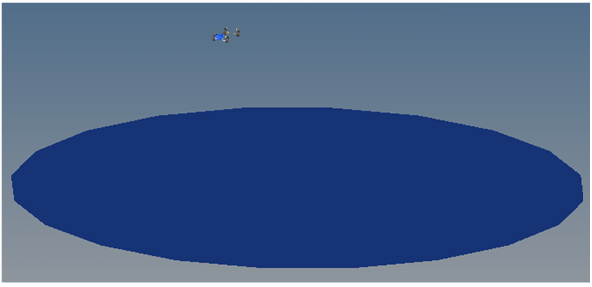
Joints
A ball joint is included in the Constant Radius event. The joint attaches a dummy body to the steering rack. The joint is included to make certain events work in ADAMS. Attach the dummy body to the steering rack if building a model manually.
Markers
One marker is included in the Constant Radius event. The path origin is the origin of skidpad graphics and is parametrically defined to be the CG of the vehicle body. The markers refer to points, and the points contain the parametric logic.
Motions
Three motions are included in the event. The steering motion to the vehicle is provided by the steer controller and acts on a revolute joint that connects the steering column to the vehicle body. If a steering column is not included in the model, the joint acts between the steering rack input shaft and the vehicle body.
The front and rear wheel motions act on the wheel spindle revolute joints that connect the wheel hub to the knuckle. The motion is initially zero (fixing the wheels to the knuckle) so the model converges statically. The motions are deactivated after the static equilibrium analysis to allow the tires to rotate.
Points
Two points are defined in the event. All points are used to create the skidpad graphics. The points contain parametric logic to define their X, Y, and Z locations. You should not need to modify any points.
Solver Variables
The Constant Radius event consists of only one solver variable, the Steer Path Variable, which calls a user subroutine to apply an input at the steering wheel in order to follow a desired path.
- Number
- Description
- 5020
- Branching ID. 5020 is a Constant radius event.
- 70000000
- The ID of a solver array containing Driver Model Controller data. The array is in the steer controller system.
- 70000100
- The ID of a Vehicle Data array containing vehicle information. The array is in the steer controller system.
- 30
- The value of the circle radius.
Templates
A template is included in the Constant Radius event task. The template is solver specific, and only the MotionSolve template is documented. The template is inserted in the solver deck after the </Model> command and controls the execution of the event.
<ResOutput
angle_type = "YPR"
/>
<ResOutput
mrf_file = "TRUE"
/>
<ResOutput
plt_file = "TRUE"
/>
<H3DOutput
switch_on = "TRUE"
increment = "1"
/>
<ResOutput
abf_file = "TRUE"
/>
{if (tire_dataset.opt_omega.ival ==1)}
<!--Initial static analysis -->
<Simulate
analysis_type = "Static"
end_time = "0.0"
/>
{endif}
<Deactivate
element_type = "MOTION"
element_id = "{mot_frnt_wheel.l.idstring}"
/>
<Deactivate
element_type = "MOTION"
element_id = "{mot_frnt_wheel.r.idstring}"
/>
<Deactivate
element_type = "MOTION"
element_id = "{mot_rear_wheel.l.idstring}"
/>
<Deactivate
element_type = "MOTION"
element_id = "{mot_rear_wheel.r.idstring}"
/>
{if (tire_dataset.opt_omega.ival ==2)}
<!--Initial static analysis -->
<Simulate
analysis_type = "Static"
end_time = "0.0"
/>
{endif}
<Deactivate
element_type = "JPRIM"
element_id = "{j_clamp_1_body.idstring}"
/>
<Deactivate
element_type = "JPRIM"
element_id = "{j_clamp_2_body.idstring}"
/>
<Motion_Joint
id = "{wh_motion.idstring}"
expr = "VARVAL({sv_str_path.idstring})"
/>
<Simulate
analysis_type = "Transient"
end_time = "{(pi*ds.radius.value*1000.0/2.0)/(447.04*ds.veh_vel.value)+ds.step_time.value+2.0}"
print_interval = "0.02"
/>
<Stop/>References
ISO +4138-2004 - Passenger cars — Steady-state circular driving behavior — Open-loop test methods.